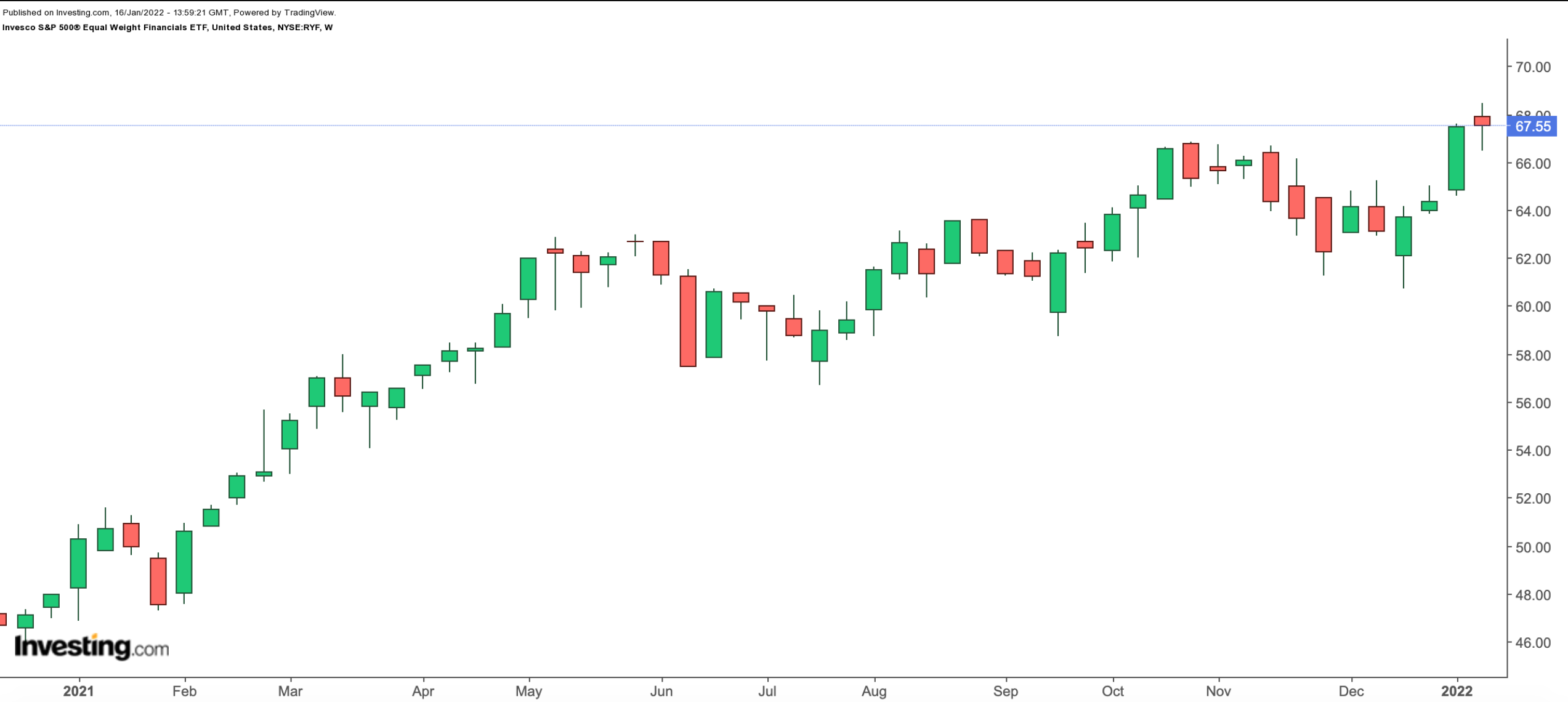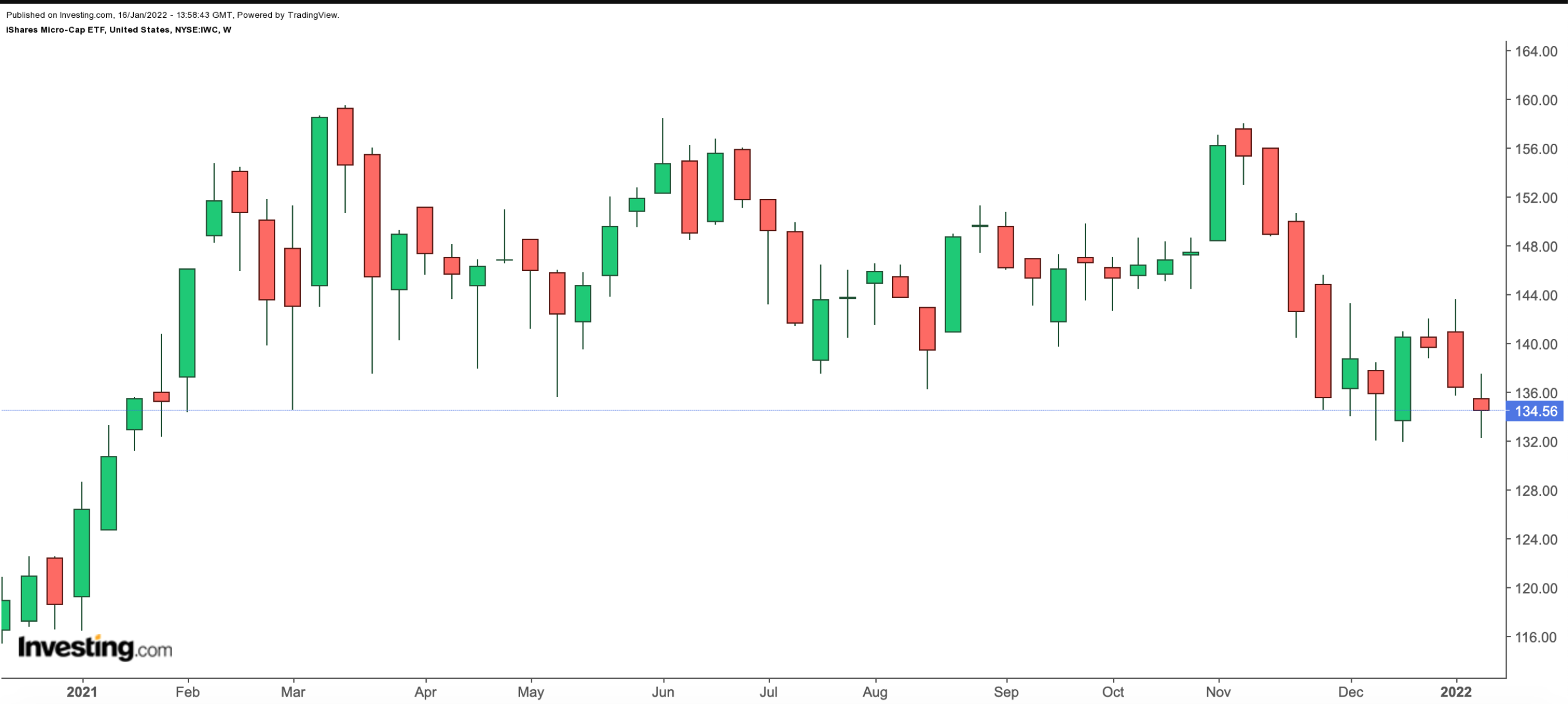January brings a new earnings season when most US-listed names begin issuing results for the last quarter of the previous year. Financial shares usually are the first to report.
On Jan 14, markets paid close attention to numbers from Citigroup (NYSE:C), JPMorgan Chase (NYSE:JPM) and Wells Fargo (NYSE:WFC). Following their announcements, investors hit the sell button on C and JPM shares, and they slid over 1% and 6%, respectively. The sell-off in JPM stock also meant a down day for the Dow Jones, which has declined about 1.2% since the start of the year.
Meanwhile, Wall Street was pleased with Wells Fargo’s report, pushing the stock to a multi-year high. This week, quarterly financials from other heavyweights could mean more choppiness in broader markets.
Stocks to keep an eye on include (in alphabetical order): Alcoa (NYSE:AA), Bank of New York Mellon (NYSE:BK), Goldman Sachs (NYSE:GS), Intuitive Surgical (NASDAQ:ISRG), Morgan Stanley (NYSE:MS), Netflix (NASDAQ:NFLX), Procter & Gamble (NYSE:PG), Schlumberger (NYSE:SLB), Travelers Companies (NYSE:TRV), and United Airlines (NASDAQ:UAL).
With that information, here are two exchange-traded funds (ETFs) that deserve to be on your watchlist.
1. Invesco S&P 500 Equal Weight Financials ETF
- Current Price: $67.55
- 52-Week Range: $47.27 - $68.49
- Dividend Yield: 1.10%
- Expense Ratio: 0.40% per year
2022 will likely see the Federal Reserve raise interest rates. As a result, many sectors, including financial stocks, have been in the limelight over the past several months.
Banks can up rates charged on loans they make, potentially leading to a higher net interest margin (NIM)—a key measure of profitability. Therefore, despite the recent volatility in bank shares, Wall Street expects financial stocks to benefit from the upcoming tightening by the Fed.
Our first fund for today, the Invesco S&P 500® Equal Weight Financials ETF (NYSE:RYF), invests in the financial sector of the S&P 500 index. Because it is equally weighted, moves in any single holding do not have a large impact on the ETF—a fact that could be important during a volatile earnings season.

RYF, which has 69 holdings, began trading in November 2006. The top 10 holdings account for almost 16% of net assets of $527.9 million. In terms of sub-sectors, we see insurance (32.84%), banks (30.13%), capital markets (29.49%), and consumer finance (5.91%).
M&T Bank (NYSE:MTB), People’s United Financial (NASDAQ:PBCT), Signature Bank (NASDAQ:SBNY), Citizens Financial Group (NYSE:CFG), Comerica (NYSE:CMA), Charles Schwab (NYSE:SCHW), and KeyCorp (NYSE:KEY) are among the names in the fund.
RYF returned over 31.3% in the past 12 months and 4.9% since the start of 2022. In fact, the fund hit a record high in recent days. Forward P/E and P/B ratios are 13.91x and 1.58x, respectively.
Given the recent run-up in price, investors could possibly decide to take some money off the table soon. A potential decline toward $65 would improve the margin of safety for buy-and-hold investors.
2. iShares Micro-Cap ETF
- Current Price: $134.56
- 52-Week Range: $129.02 - $159.56
- Dividend Yield: 0.81%
- Expense Ratio: 0.6% per year
We recently discussed small-capitalization (cap) shares that deserve readers’ attention. Their market values are usually between $300 million and $2 billion.
Our next fund, the iShares Micro-Cap ETF (NYSE:IWC), instead, invests in micro-caps whose values are typically between $50 million and $300 million. The fund was first listed in August 2005.

IWC, which has 1789 holdings, tracks the Russell Microcap Index. Only about 4% of net assets of $1.2 billion are in the leading 10 names.
Health care shares have the highest slice with 23.81%. Next in line are financials (22.78%), industrials (11.61%), consumer discretionary (11.43%) and information technology (9.69%).
Oil and gas company Civitas Resources (NYSE:CIVI), health management platform Apollo Medical (NASDAQ:AMEH), Pennsylvania-based Customers Bancorp (NYSE:CUBI), education group Houghton Mifflin Harcourt (NASDAQ:HMHC), and real estate investment trust (REIT) NexPoint Residential Trust (NYSE:NXRT) are several of the businesses in IWC.
In the past 12 months, the ETF is up almost 1.5%, but declined 3.7% year-to-date. The fund saw a record high in March 2021. Trailing P/E and P/B ratios are 14.55x and 1.84x.
Investing in some of the smallest US names may not be appropriate for all portfolios. However, a small allocation could help in diversification. It is not always possible for most retail investors to analyze most micro-caps in detail. Yet, many robust names in this group become acquisition targets. So a fund like IWC could provide exposure to such fast-growing stocks in the US.
